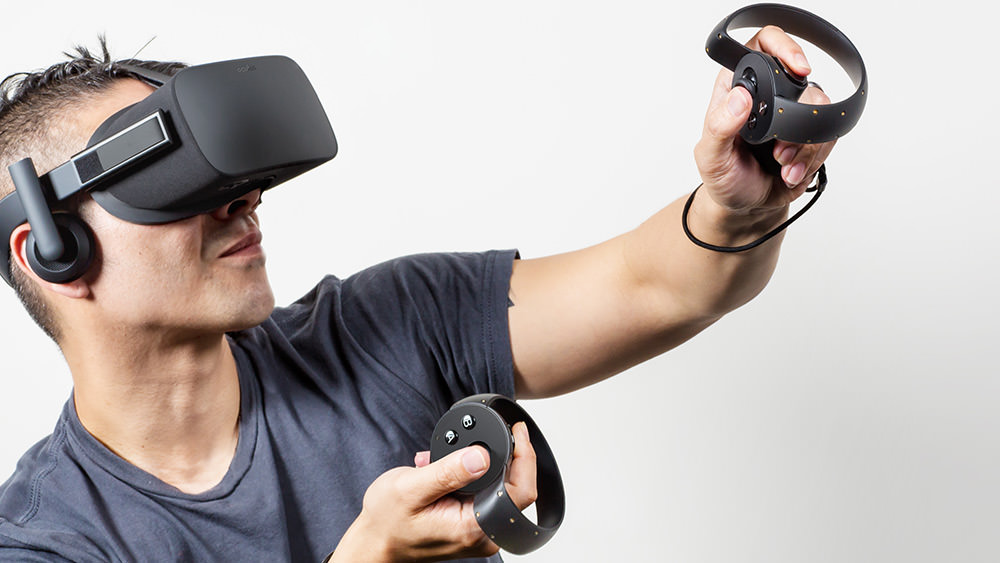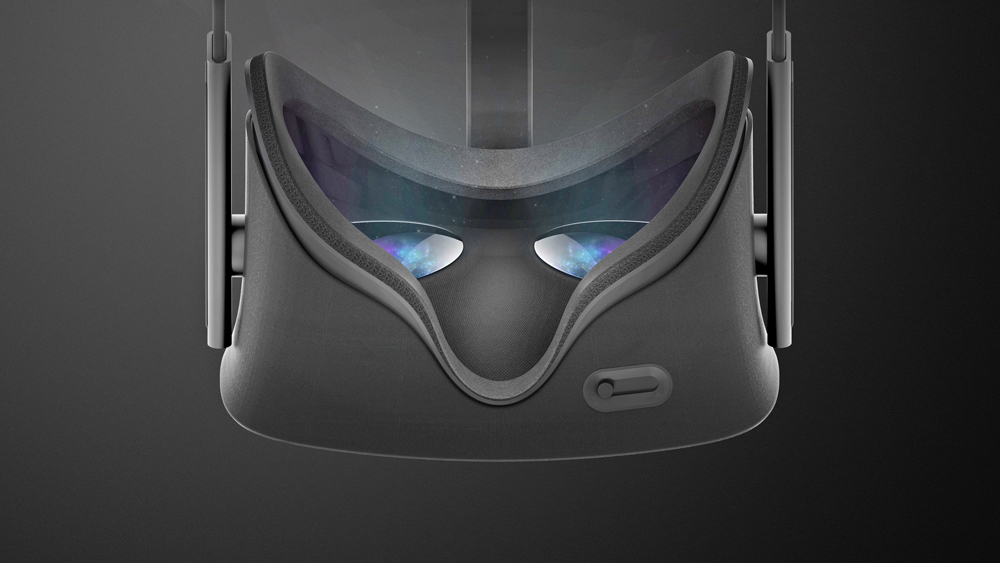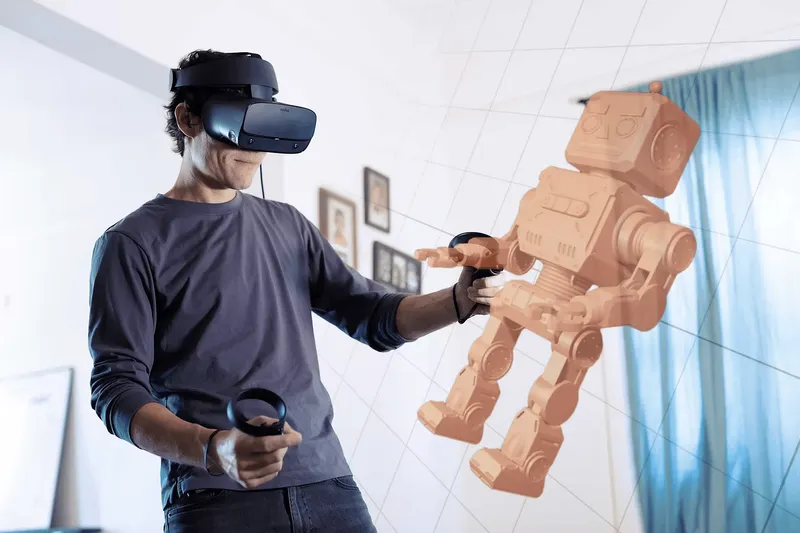One year ago, on May 6th 2015, Oculus decided to drop the bombshell.
At the time, the virtual reality industry comprised of Gear VR and Google Cardboard. Enthusiasts were still reeling from the reveal of the HTC Vive back in March and anticipating an eventful E3 in a months’ time. We’d all still jump at the mention of the consumer Oculus Rift, but no one had guessed it would be announced in such a carefree fashion.
The tweet dropped into our feeds, simply reading:
We’re incredibly excited to announce that the Rift will be shipping to consumers in Q1 2016! http://t.co/XEZ04ZP6UT pic.twitter.com/kpcK5zhpZt
— Oculus (@oculus) May 6, 2015
The Hype Train Leaves The Station
After a wait that for some VR enthusiasts that started decades ago, and others that had been obsessed since the 2012 Kickstarter launch of the Rift, Oculus provided the slightest tease of the long anticipated Rift “Consumer Version 1” (CV1), along with a broad window in which to expect it. The company also promised that we were in for a lot more in the coming weeks and months. How right they were.
Just a week after that reveal we were finally given a look at the recommended spec for running the Rift. The beefy NVIDIA GTX 970 and AMD 290 graphics cards needed were perhaps the first wake up call to the realities of the cost of PC-powered VR for consumers. In hindsight, it was wise for Oculus to get this expectation out there early, then to put some distance between the cost of that machine and the price of the device itself. Not that it spared them much grief.
Rift Reveal
A media event leading into E3 2015 was the Rift’s real coming out party, though. Half a year after Oculus held its first-ever developer conference – 2014’s Oculus Connect – the team was ready to livestream an announcement that would play host to the full reveal of CV1 and, surprisingly, its Oculus Touch position-tracked hand controllers. The June 11th event saw the company creep even further out of its shell, putting on a show similar to what you might expect from Ubisoft or EA rather than Samsung or Google. There were big game announcements in Edge of Nowhere and Chronos, surprise collaborations with Microsoft to bundle in an Xbox One controller and stream console games, and Oculus executives comfortably filled new roles as they addressed crowds both online and off.
Touch, though, was the star of the show, a fact that rang true right the way through E3 week.
Oculus Touch Steals E3
Touch was Oculus’ ultimate answer to the HTC Vive, which had up until this point been showcasing undeniably more impressive tracking technology and hand controls.
Oculus’ Toybox demo was critically acclaimed, with rave previews about just how comfortable, accurate, and intuitive the pair of controllers were. Coupled with playable versions games like Chronos and EVE: Valkyrie, and Oculus had its biggest E3 yet.
It hasn’t all just been about games, though. In the period following June’s show, Oculus purchased depth-sensing tech group, Pebbles Technology, proving that its work in the hardware department was far from finished. Facebook’s VR company also showed Oculus Story Studios’ Henry, laying the foundations for a future in which VR film and video is just as important as gaming.
Questions still loomed, however.
But How Much Is The Rift?
Everyone was excited to know that CV1 was on its way, but they still didn’t know exactly when the kit would be available to pre-order or ship, and the company was still tight lipped on pricing. Perhaps September’s Oculus Connect 2 would provide the answers?
No such luck.
The company’s second developer conference was undeniably eventful, showing Oculus Medium for the first time as Facebook’s answer to Google’s Tilt Brush creation software. But it did little to quell frustrations about the lack of release information. Doubt that the Vive would be making its intended 2015 shipping window also started to spread.
Minecraft was finally confirmed for Oculus platforms, and John Carmack’s keynote speech about developing it was as fascinating as ever, but fans were still left wanting.
Consumer Gear VR Launches
The end of 2015 wouldn’t be completely barren; Oculus did launch the consumer version of the Gear VR in partnership with Samsung, and with it the first glimpse of the ecosystem that would support the Oculus Rift. It featured an app store and features that promised to be quite familiar when the Rift finally launched.
In truth, though 2015 was ultimately quieter year for the Rift on the whole. There was no exhaustive recruitment drive and no dramatic upheaval like the 2014 Facebook acquisition. It was seemingly smooth sailing for the company.
2016 didn’t wait long to buck that trend.
Oculus Touch Delay
Oculus closed the year out with news that Oculus Touch had been delayed from its Q2 2016 window into the second half of the year. It was disappointing for sure, but the buzzing anticipation for news on the Rift launch soon drowned any complaints out.
When that news was finally revealed, though, things got more than a little rough.
Sticker Shock At $600 Rift
Few could believe the $600 price that sat before them when the Rift’s pre-order campaign countdown timer hit 0 during the Consumer Electronics Show in January.
In the days leading up to the launch, some close watchers had given their ‘realistic’ expectations of the price at around $500, which itself was outside of the now infamous “ballpark” $350 figure that Oculus had given in the past. Just so you know, “Oculus Ballpark” comes up as a suggested phrase in Google before you can finish typing it in. It seems unlikely Oculus co-founder Palmer Luckey will be using the phrase again.
If the recommended specifications for the Rift had been sobering, then the pricing reveal had to have been a quick and violent flush out. It set the tone for things to come; the HTC Vive’s $800 price was almost a relief in comparison given the added value in the tracking technology. While the PlayStation VR’s own $400 cost (not including accessories) was practically a godsend for anyone that wanted high-end VR this year but couldn’t afford a Rift.
Sticker shock didn’t seem to have too much of a negative effect, though. The Rift quickly sold through its supply of launch day (March 28th) units and then preceded to do the same for the units designated for April, May and June shipping. Of course, we don’t know exactly how many HMDs have been sold, but Oculus insists its internal expectations were beaten. That’s an easy statement to make, though.
Oculus did its best to weather the storm with goodwill too; EVE: Valkyrie went free to anyone that pre-ordered the kit, and Lucky’s Tale is still included with every purchase. Its most generous gesture, though, was offering a free Rift to those that purchased a DK1 unit through the company’s historic Kickstarter campaign in 2012. It was a remarkable offering, though it probably hasn’t gone as far as the company hoped it would in making good with disgruntled fans.
That is to say that 2016 has not been kind to Oculus.
Rift Delays
Its initial ship date was highly anticipated and well prepared for, with well over 30 games ready to go. Shipping delays, though, have been disastrous.
The expected launch day blow-out resembled more of a trickle in reality, and Oculus remained tight-lipped about what’s going on with units that should have shipped out weeks ago. Facebook paid for shipping costs as an apology. It’s a situation that should be sorted within time, but far from ideal for the launch of a product with such lofty expectations attached to it.
Elsewhere, Oculus faces heat from industry figureheads like Epic Games’ Tim Sweeney, who went very, very public in his lambasting of company’s approach to allowing content from places other than Oculus. It’s especially damaging considering the close partnership the two have previously shared, making technology demos for new hardware.
Happy Customers?
In fairness, though, there may be a lot of people taking to internet forums and blogs to criticise Oculus right now, but there are also some very happy people that aren’t paying attention to any of that because they’re in their 60th hour of EVE: Valkyrie, or discovering the joys of Lucky’s Tale. There’s plenty to say about the handling of the Oculus Rift launch, but the product itself is certainly delivering.
The past 365 days have had plenty of ups and downs for the Oculus Rift. We’ve seen the company finally take its training wheels off and step into a role similar to the likes of Sony and Microsoft’s gaming divisions, while slowly becoming a larger part of the biggest social network on the planet.
We’ve seen promises spoken and broken, apologies made and victories celebrated. Most importantly, though, we’ve seen a revolutionary device five years in the making finally launch to the masses. What happens next could shape the future.






























